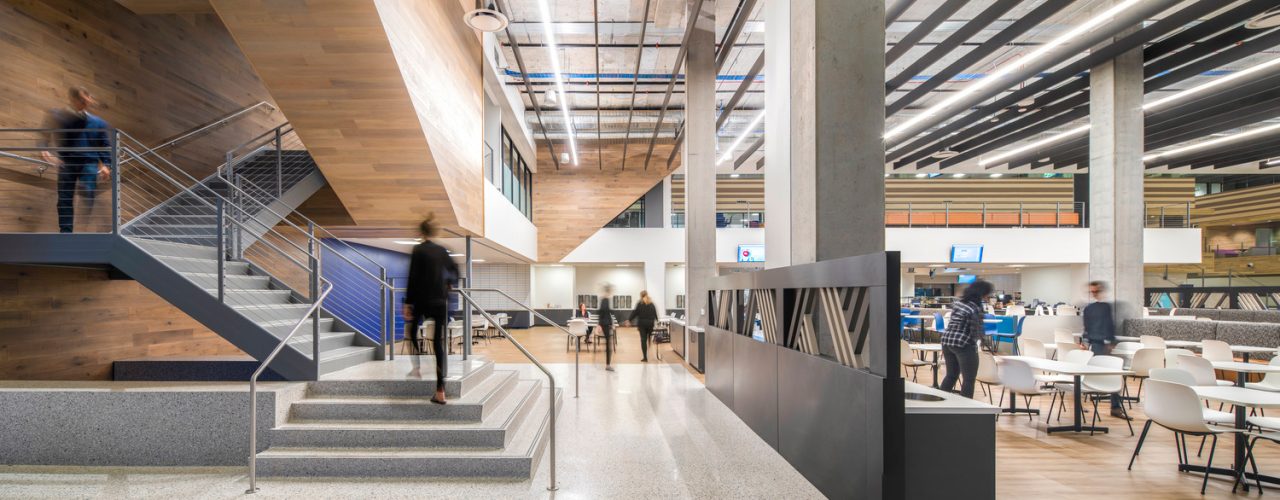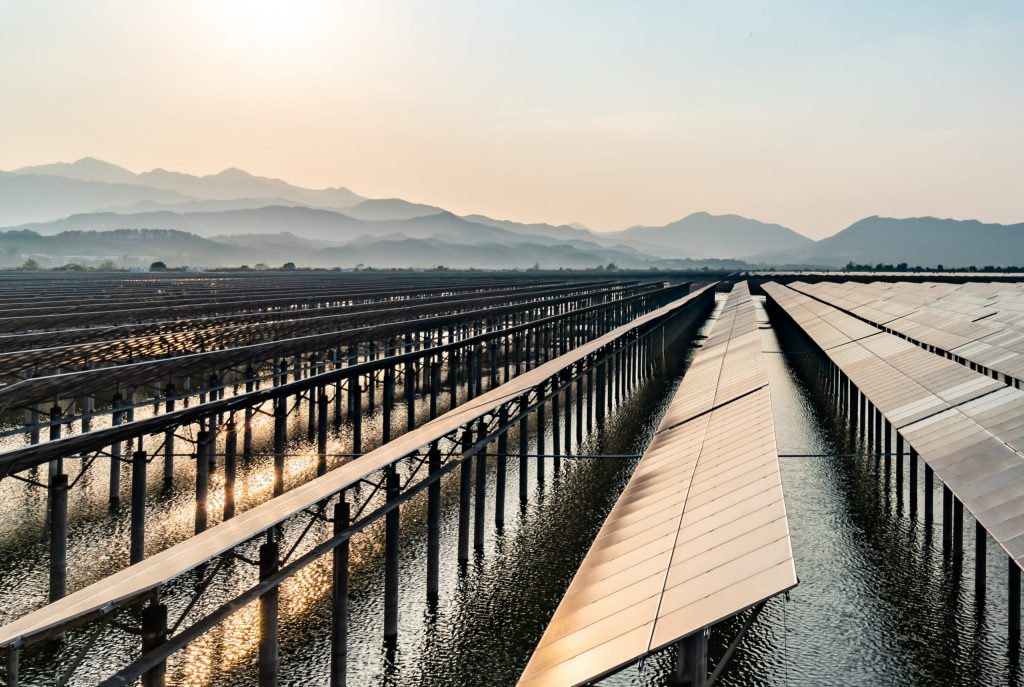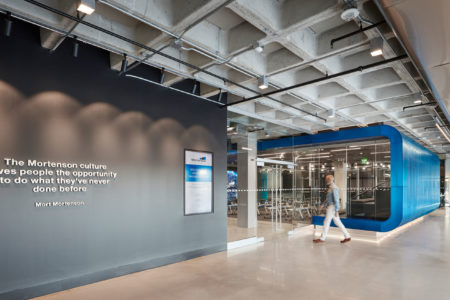What’s Next for Smart Building Technology

RSP’s Rajan Battish talks about the next evolution of smart building technology and what that means for today’s corporate users and building owners.
SMART BUILDING: [smahrt bil-ding] noun – A digitally connected structure that relies on technology to optimize building operations and management, enhance the user experience, increase productivity, reduce costs, and mitigate physical and cybersecurity risks.
Smart buildings have been around for decades, but only recently have operators and owners begun to tap into their vast potential. As we begin planning for the great, post-COVID migration back to the workplace, well-conceived, scalable systems may just emerge as a key differentiator in bringing us all back to some type of normal.
EMPLOYEE EXPERIENCE AND COMFORT
Much of the early smart building technology focused on employee comfort—light sensors, temperature preferences, and automatic conference room booking, and the like, made a day in the office a little less tedious. Post-COVID, we expect this technology to come roaring back as hybrid scenarios (some work from home, some back to the office) proliferate. What has the potential to be a logistical nightmare may find salvation in simple scheduling apps that allow employees to reserve seats, reveal who is where on what day, who needs a meeting room when, and then adjust the lighting and temperature to personal preference.
It’s fairly standard tech, but it can drive big energy savings, not to mention help keep the peace. Here’s another example: At the moment, the ASHRAE standard is to use outside air in a building’s ventilation system to increase airflow. This is expensive and doesn’t make sense if very few people are in the office. If we tie occupancy data into the mechanical systems, systems would only need to click on when there is a critical mass of people in the building.

OPERATIONAL SIMPLICITY
The beauty of smart buildings is that they allow people to tailor their work environment, but they also allow buildings to “talk” to each other and share data, all to the benefit of the property owner. This is an especially potent management tool for those with multiple assets and large real estate portfolios.
Here’s a simple example: A building owner replaces the bearings on a chiller in a New York property five years earlier than its life expectancy. Let’s say this owner specified the same chiller in a building in New Jersey—same climate and usage profile. Rather than let the maintenance happen in a vacuum, the operations teams share the data and run a check on the New Jersey chiller, not to mention those chillers in other properties, to prevent any downtime or disruption of services. It may not sound glamorous, but this is big data working to get all the assets in a portfolio aligned and, ultimately, that helps owners with capital budget planning.
BETTER NETWORKS MEAN BETTER BUSINESS
5G is a hot topic in consumer tech, largely because of its promise of a faster, more reliable network. National implementation is ongoing and taking longer than expected, unhappily; but within a single commercial building or campus, 5G makes the future possible. Even remote employees could have meetings on the spot—imagine video conferences without lagging presentations, frozen coworkers or large gaps of silence.
Security is a huge issue, of course, and a fast network and Edge Computing are crucial. By using an edge compute device, all the servers, data storage and network connectivity are built in and it becomes a secure mini cloud that can communicate with other clouds. This mini cloud can cover a whole building, a few floors or even a single team, giving a lot of flexibility and customization to these tech solutions.
GREEN BUILDINGS ARE SMART BUILDINGS
Building owners all over the country are looking for ways to meet the 2030 Challenge and become carbon neutral. That won’t be possible without smart building technology. Installing energy-efficient equipment is no longer enough and, in extreme climates like the Southwest, using passive heating and cooling is helpful…but not enough to take us over the finish line.
Recent weather-related events in Texas and elsewhere have reiterated the push for some building owners to be “off the grid” and implement battery storage systems that help them remove some of the infrastructure in the building. Batteries can reduce the demand charge on a data center, for example, and minimize the amount of energy used during peak hours. This can extend the life of the infrastructure and makes the whole enterprise more resilient if there’s a brown out. We’re looking toward some high-potential innovations, like a sodium ion battery, to make this all much more viable in the coming months.

All of this leads to the idea of smart grids instead of just smart buildings. Utilities aren’t going away, but batteries and solar power can make us all greener on a larger scale, extending the life of existing infrastructure and making it renewable in the process. For instance, we know commercial buildings don’t need a lot of power after work hours, so if we can use excess energy stored in batteries and put it into people’s homes, we can have an optimized smart grid.
ARTIFICIAL INTELLIGENCE GOES CORPORATE
Millions of people already use integrated AI and Smart Building technology in their homes every day. Commercial buildings are using some of the components, but they’re mostly missing the “intelligence” elements. We’re working with a client who uses predictive modeling on their data center infrastructure. It wasn’t necessarily new technology; it was previously used on jet engines for predicting maintenance and repair, but it’s been simplified for mechanical equipment in commercial office spaces. Based on AI technology, they can model for failure and when maintenance can and should be completed. It’s an industrial solution now available in a commercial solution at a good price point, so it’s a new application.
And it gets more complex from there. Some of the biggest companies, like Google, use it to optimize the performance of their data centers, monitoring energy consumption for IT equipment and then adjusting power flow, temperature and turning off individual components, for example. The claim is that this can save up to 10% of energy operating costs.
The big question right now is if there is a good return for the investment for smaller players. The technology is becoming faster and cheaper, but it’s still in the early stages. At the moment, it makes the most sense for clients who have large, owned portfolios who aren’t looking for a quick return, but have a longer-term vision.
But in a wider context, AI has huge potential. Back to the power outages in Texas, imagine if there was a way to automatically shut down some commercial power usage when we knew a major weather event was coming.
Having all the data is one thing, but AI can tell us what the data means and what we should do about it. This has improved by leaps and bounds in recent years and it’s the kind of technology that will make a building truly “smart.”





